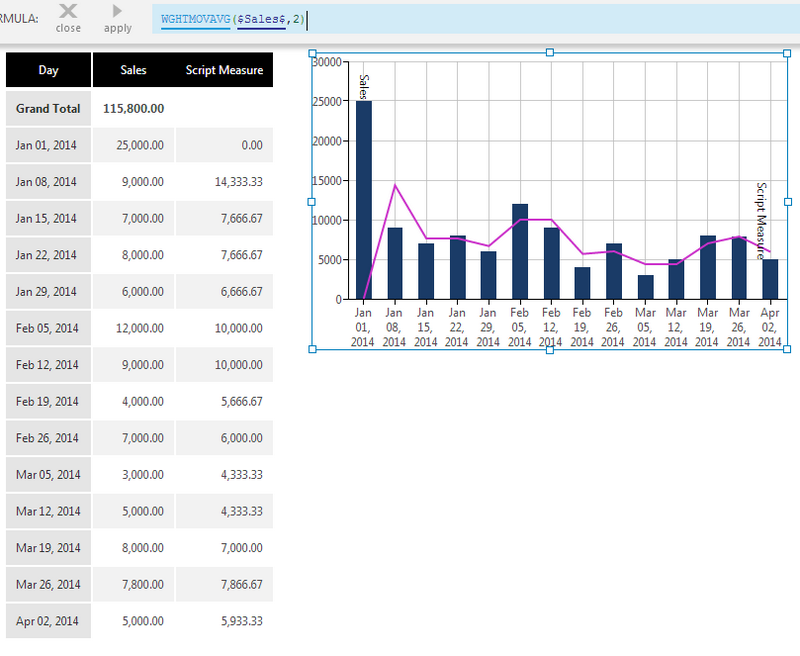Weighted Moving Average
The Weighted Moving Average (WMA) function computes the average of a set of input values over a specified number of time periods. In this function, a greater weight is given to more recent data. The function can be used to smooth a data series, which helps to reduce noise and make it easier to spot data trends.
The mathematical formula being calculated is as follows:
WMAt = (n * Yt / K) + ((n-1) * Yt-1 / K)
Where Y is the value, n is the number of periods, and K is the sum of n-based multipliers (for example, for n=3, K=3+2+1=6).
1. Syntax
WGHTMOVAVG(d0,s0,Alignment)
2. Input
The Weighted Moving Average function requires the following input:
- d0 - Input data values - The set of data values for which the Weighted Moving Average is calculated.
3. Parameters
The Weighted Moving Average function requires the following parameters:
- s0 Period - The number of time periods to use in the calculation. The default value is 10.
- Alignment (Optional) – Hierarchy placeholder to be used as the alignment axis.
4. Output
The Weighted Moving Average function generates the following output:
- Weighted Moving Average - The Weighted Moving Average result set.

